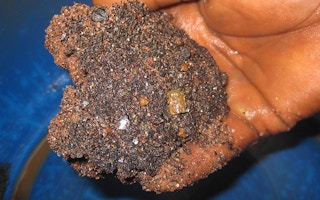Abuses linked to mining in countries such as Myanmar and Colombia are being overlooked by technology companies focused only on eliminating “conflict minerals” from war-torn parts of Africa in their supply chains, researchers said.
In Democratic Republic of Congo (DRC), competition for mineral resources has fuelled two decades of conflict in its eastern provinces, including a 1998 to 2003 war that killed millions, mostly from hunger and disease.
Congo’s supply of tantalum, tin, tungsten and gold - metals used in smartphones, batteries and laptops - has been under scrutiny since 2010, when US laws required US-listed firms to ensure supply chains were free from “conflict minerals”.
Yet the same minerals are being quarried in areas controlled by armed groups — sometimes using child labour — in countries such as Myanmar, Bolivia and Rwanda, according to research published by Verisk Maplecroft on Thursday.
The problem for tech companies was being able to trace the metals used in their products to the source mine or smelter, the risk consultancy group said in a report.
“
Organisations need to be aware of the bigger picture when sourcing minerals from different countries – otherwise they risk a consumer backlash or regulatory penalties from the raft of emerging supply chain legislation.
Stefan Sabo-Walsh, Verisk Maplecroft
“The problem is because this is so far down the supply chain, it’s difficult for technology companies to know if those minerals they’re using are coming from irresponsibly managed operations,” said Stefan Sabo-Walsh of Verisk Maplecroft.
Sabo-Walsh told the Thomson Reuters Foundation that in the most extreme cases the minerals are excavated using forced labour in order to buy weapons and fund violence.
A convoluted process
After minerals are mined, they are sold to a middleman and usually taken to the country’s capital, where the raw metal is extracted and blended with other metals, the report said.
The blend is exported to a country such as China and then transformed for use in tech products.
The complicated process “further muddies supply chain transparency efforts” for companies that strive to only use safe and ethical extraction, Verisk Maplecroft said.
Tin, which is used in tablet computers and smartphones, was ranked as having the highest risk for labour rights violations at illegal mines.
Bolivia, Myanmar and Indonesia, some of the largest tin-producing countries, pose an “extreme risk” for child labour at tin mines, the research showed.
Some smaller mines are not run by armed groups but still hurt the environment and local communities and are difficult to police, Sabo-Walsh said.
At illegal mines, waste water runoff often makes its way into local water sources, polluting the supply, he said.
“Organisations need to be aware of the bigger picture when sourcing minerals from different countries – otherwise they risk a consumer backlash or regulatory penalties from the raft of emerging supply chain legislation,” he said in a statement.
This story was published with permission from Thomson Reuters Foundation, the charitable arm of Thomson Reuters, that covers humanitarian news, women’s rights, trafficking and climate change. Visit news.trust.org.

















